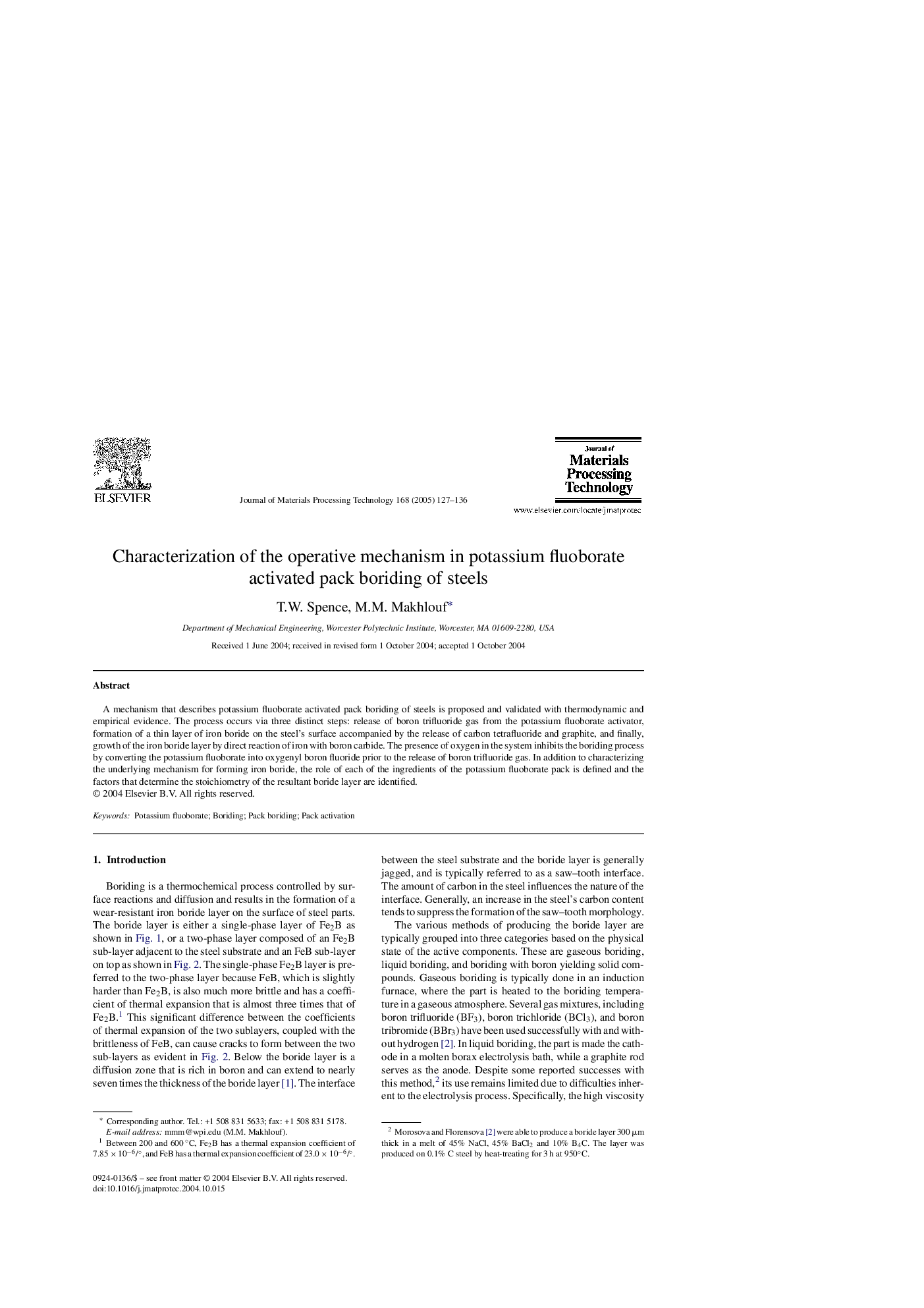| Article ID | Journal | Published Year | Pages | File Type |
|---|---|---|---|---|
| 10418084 | Journal of Materials Processing Technology | 2005 | 10 Pages |
Abstract
A mechanism that describes potassium fluoborate activated pack boriding of steels is proposed and validated with thermodynamic and empirical evidence. The process occurs via three distinct steps: release of boron trifluoride gas from the potassium fluoborate activator, formation of a thin layer of iron boride on the steel's surface accompanied by the release of carbon tetrafluoride and graphite, and finally, growth of the iron boride layer by direct reaction of iron with boron carbide. The presence of oxygen in the system inhibits the boriding process by converting the potassium fluoborate into oxygenyl boron fluoride prior to the release of boron trifluoride gas. In addition to characterizing the underlying mechanism for forming iron boride, the role of each of the ingredients of the potassium fluoborate pack is defined and the factors that determine the stoichiometry of the resultant boride layer are identified.
Keywords
Related Topics
Physical Sciences and Engineering
Engineering
Industrial and Manufacturing Engineering
Authors
T.W. Spence, M.M. Makhlouf,
